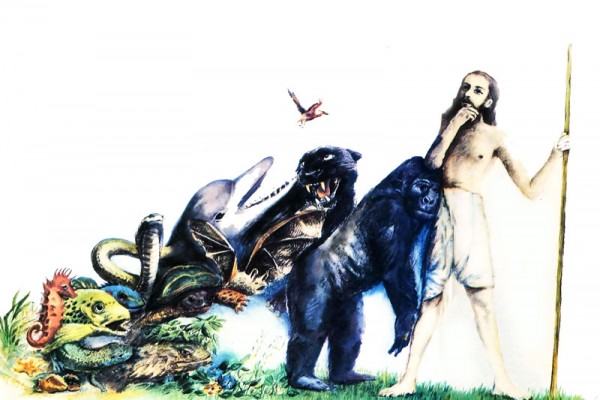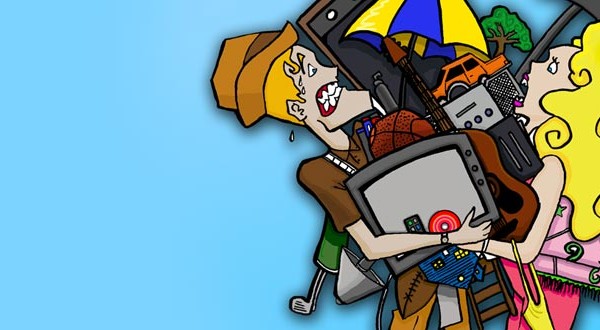Food. The concept resonates with every man, woman, and child; however, what is food and what is not food? In today’s industrialized food culture, that which is now considered food would not be considered edible in pre-industrial times. Furthermore, food is defined as any nourishing substance that sustains life, provides, energy, and growth, but when this standard is applied to the majority of foodstuffs sold on the market today, it falls short when observed in longitudinal studies on consumer health.
So what has changed from the times of our grandfathers and great-grandfathers, and now? How has the food changed and how can one discriminate between ‘contemporary’ food and ‘traditional’ food? To get a truly comprehensive understanding of this issue, one must understand the history of food manipulation and its manipulators.
History
Since the time of George Mendel’s discovery of classic selection, whereby one plant species is cross-bred with a related species to produce desired characteristics, scientists have been working on manipulating organisms. Control over the organism’s characteristics was enhanced with the discovery of DNA in 1953 because scientists could splice individual genes of an organism’s helix to another organism. These events were the forerunner of the genetically modified (GMO), non-organic foods of today.
Modern corporations have since taken up the flagship of genetic modification as a means of economic development; and of the corporations that have been the most dynamic in influencing the genetic food culture, especially here in the United States, is Monsanto.

Monsanto has a history of seedy behavior that has been anti-humanitarian and grossly disingenuous. In the 1970s, Monsanto Corporation was a thriving chemical manufacturing company. The chemicals they engineered were highly toxic to animals and humans alike. One especially infamous chemical they manufactured was Agent Orange, which was used in the Vietnam War for chemical warfare purposes, and resulted in the deaths of hundreds of thousands of people and the injury of millions more.
In addition to manufacturing Agent Orange, Monsanto produced other deleterious chemicals like DDT, PCBs, and bovine growth hormone. DDT, which was commonly found in insecticides as prevention for malaria and typhus, was banned in the United States in 1972 when it was discovered to be carcinogenic. Similarly, PCBs were banned in 1979 by Congress for reasons akin to DDT, being reported by the EPA to cause a variety of carcinogenic and non-carcinogenic disorders. The people of Anniston, Alabama are live testimonials of the dangers of PCBs because they were directly exposed to it when Monsanto Corporation covertly dumped these chemicals in the water system and buried them in residential neighborhoods. Bovine growth hormone, known as rBST, is a hormone injected into dairy cows to increase milk production. Studies have found that the growth hormone increases the probability of developing mastitis (inflammation of the breast tissue), and lameness in cows that receive regular rBST injections. These chemicals have a dismal history of causing health problems in thousands of people that came in contact with them; accordingly, their use today is highly controversial.
Despite clear research indicating the chemicals were highly dangerous, Monsanto willfully sold their products to the public under false pretenses. Lawsuits were levied against the corporation in response to the false advertisements of their products being organic and biodegradable. Furthermore, numerous documents have been uncovered in recent years that detail insalubrious qualities found in their products when they were studied in research labs by the company’s own research team, even before it was made known to the public through the research of independent scientists. Therefore, despite knowing the dangers of their products, they still sold it to make profit.

No longer a chemical manufacturing company, Monsanto Corporation is now the most lucrative biotech company in the world. They control 95 percent of the seed industry.
How did they become so successful? The same business practices that made it successful in the chemical sector were applied to agriculture. Intellectual property rights and patents were applied to GMOs in the 1980s through the legal phenomenon of ‘plant breeders rights,’ which gave the company exclusive privilege to the seeds they developed in the laboratory and set a legal precedent of corporations being able to patent life in the form of seeds. This law not only cements Monsanto’s monopoly, but gives the company perpetual control of their product. Farmers that use their seeds can only do so for one harvest instead of saving seeds for the next harvest, as is the traditional practice.
Organic Famers: An Endangered Species
Organic farmers are being muscled out. The blitzkrieg against farmers by Monsanto is based on the initial fallacy of claiming nature to be private property. As a result of such a mentality, anyone who infringes on Monsanto’s property is considered a thief, and subject to prosecution, even if such ‘thievery’ was actually not the part of the farmer, but was done by Mother Nature (i.e. winds blow Monsanto seeds to another’s property).

Lawsuits brought against farmers mostly deal with these two subjects: reusing their seeds or having their seeds on the property. The mentality of owning life is a form of gross ignorance because it attempts to supersede Mother Nature by establishing it as private property. As we can see throughout the course of time, society has incrementally infringed on the path of Mother Nature and created more complex, artificial boundaries that simply create more complex problems.
Force Fed
The permanent effects of GMOs on biology have created a momentous and long-term shift in agriculture in a short duration; combined with the effect of herbicides, which can be disastrous to health and biodiversity, chemical manipulation in farming has raised a vehement concern on the safety and future of food.
The process of making a GMO plant cannot be reversed. They are engineered through splicing a particular gene to the DNA of a plant via a pollen carrier. The virus gene infiltrates the DNA, changing the natural characteristics of the plant. Thereafter the original plant is forever changed and the hybrid plant is maintained through the genes in successive generations.
In addition to being irreversible, GMOs affect the food in a number of important ways. It has shown to spur food allergies, create higher levels of toxicity in the food itself, lead to degenerative diseases, immune disorders, cancer, and other maladies. All these findings come from case studies of consumers of GMO products; however, no official studies have been published, because despite the findings I mentioned above, food safety officials have presumptuously deemed GMOs to be equivalent to organic crops. To make matters more credulous, Monsanto is the only one with the legal right to study their own seeds!
Bill HR933: The Monsanto Protection Act
Bill HR933 is an act of violation against the Constitution and proper political procedures. In the bill HR 933 that President Obama signed on March 26, 2013 was a section that was not originally part of the bill, but discreetly tacked on as it was undergoing review, which gave Monsanto’s GMOs protection from litigation. Because the bill gives Monsanto inviolability from government intervention, it is unconstitutional as it obviates the judiciary.
Prevention vs. Deception
The sordid history of Monsanto is an ancillary issue because what was done is now in the past and unchangeable. However, the wise look to the past for indications of what is to come and for the intelligent class of men whom are aware of the precarious position of agribusiness, there is a pressing need to engender change in government policy to prevent future injustices. For example, if a criminal has a history of stealing bread and a man knows of the criminal’s proclivities, then it is the fault, not of the criminal, but of the man, if he unconsciously leaves bread for the criminal to steal. Fool me once, fool me twice, and fool me again and again. Monsanto has been left to its own devices when it has shown to be untrustworthy, and now those to blame are the regulators and the ignorant masses for failing to recognize the situation. The Monsanto Protection Act is a most barefaced indicator of the company’s future plans at avoiding regulation.
We cannot trust Monsanto nor can we trust the food regulators whom are as selfishly invested. In bygone times, if any person in a position of power was not performing his duties for the welfare of the people, they would be brought to swift justice. In stark contrast, what we find in today’s federal and civil authority is a patchwork system of inefficacy, duplicity, and equivocation bent towards economic development at the cost of rectitude. Monsanto’s continued growth despite their serial abuses are due evidence of a society that has lost its ability to discriminate.
The Bhagavad-gita tells us that when attachment increases, intelligence is eventually lost; and how can one expect to make prudent decisions for oneself or on behalf of others when one’s intelligence is compromised? How can selfish motives ultimately be good for anyone?



